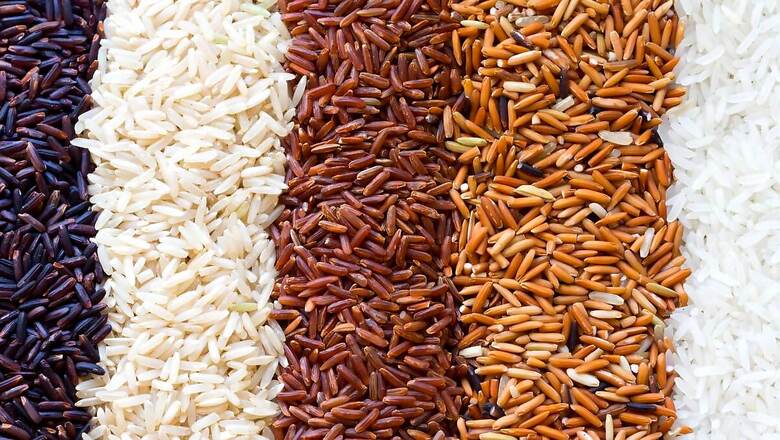
views
Rice stands as India’s paramount food crop, serving as a staple diet for the majority of its populace. Cultivation methods vary across regions, blending traditional and modern techniques based on soil types. Market shelves boast a variety of rice grains, including white, brown, red and black rice, each offering distinct nutritional benefits. But the critical query remains: which rice variety ranks healthiest?
White Rice: Universally prevalent, white rice undergoes processing that strips away nutrients like fibre, antioxidants and vitamins. Consequently, its consumption elevates blood sugar levels due to its high glycemic index. A 100-gram serving contains roughly 130 calories.
Brown Rice: Revered as the healthier alternative, brown rice boasts higher fibre, protein, vitamins and minerals compared to its white counterpart. With a lower glycemic index, brown rice aids in blood sugar regulation, diminishing risks of heart disease and diabetes. Approximately 111 calories are packed into 100 grams of brown rice.
Red Rice: Enriched with anthocyanin, red rice combats inflammation and hypertension while fostering weight loss through iron and zinc content. Despite its nutritional benefits, red rice carries a higher caloric load, with 100 grams yielding around 455 calories.
Black Rice: Dubbed purple or forbidden rice, black rice dazzles with its anthocyanin content, tackling inflammation and oxidative stress. Abundant in vitamin E and iron, it fortifies liver and heart health. While possessing a moderate glycemic index, black rice boasts superior protein and fibre levels compared to other varieties.
These insights illuminate the nuanced nutritional profiles of various rice types, enabling informed dietary choices aligned with individual health goals.
While white rice remains a dietary staple, individuals seeking enhanced nutritional value often turn to brown, red, or black rice varieties. Brown rice emerges as a frontrunner in health-conscious circles, lauded for its rich fibre content and blood sugar-regulating properties. Red rice, with its anti-inflammatory benefits, appeals to those prioritizing heart health and weight management despite its higher calorie count. Meanwhile, black rice stands out for its potent antioxidant properties, offering a unique blend of nutrients beneficial for overall well-being.
Incorporating these diverse rice varieties into one’s diet can provide a spectrum of health benefits, from improved digestion and blood sugar control to enhanced heart and liver health. By understanding the nutritional nuances of each rice type, individuals can make informed choices that support their wellness journey.

















Comments
0 comment